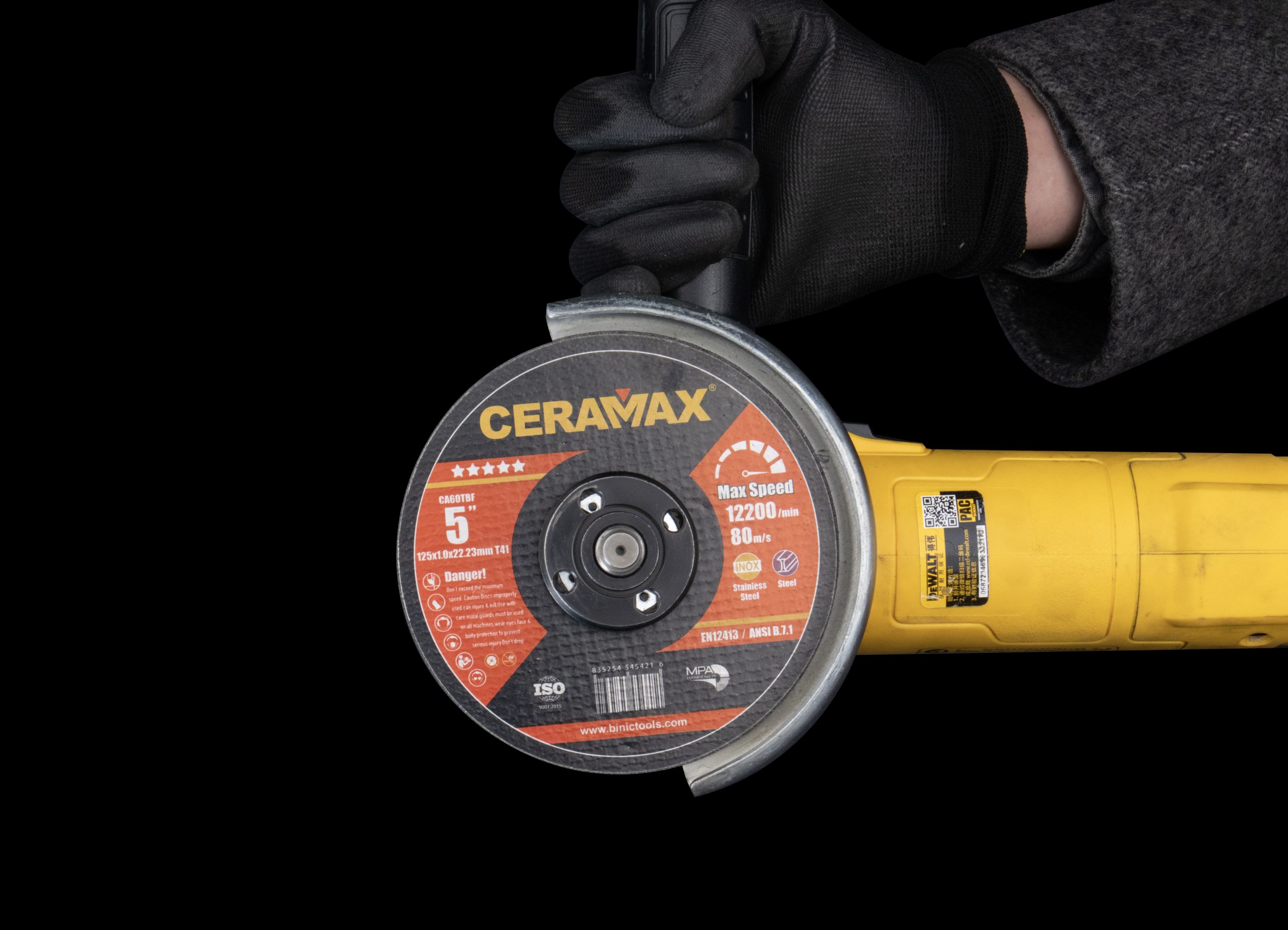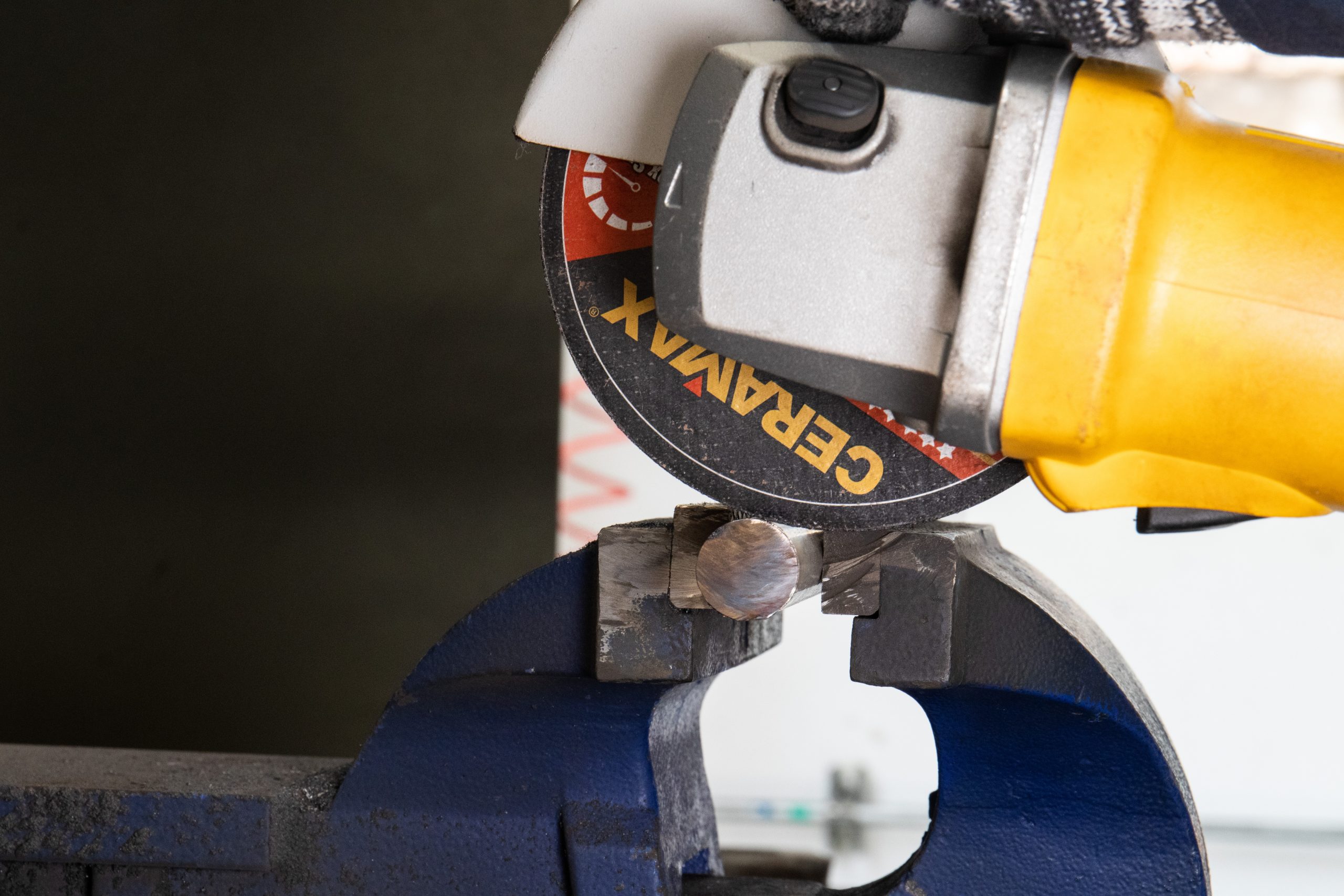Cut-off wheels, also known as cutting discs, are integral tools in metalworking, construction, and fabrication industries. They are designed to cut through metal, steel, and other hard materials with precision. However, using these tools comes with inherent risks. Ensuring safety while using cut-off wheels of various diameters requires understanding the tool, following best practices, and adhering to safety guidelines. This article outlines the best practices for cut-off wheel safety across different wheel diameters, ensuring a safe and efficient working environment.
Understanding Cut-Off Wheels
Cut-off wheels are thin, abrasive discs used with angle grinders or stationary machines to cut through materials. They come in various diameters, typically ranging from 4 inches to 14 inches or more, each suited for specific applications. Smaller diameters are often used for precision work and lighter materials, while larger diameters are used for heavy-duty cutting tasks.
General Safety Guidelines for All Wheel Diameters
Regardless of the diameter, certain safety practices are universally applicable to all cut-off wheels:
- Personal Protective Equipment (PPE): Always wear appropriate PPE, including safety goggles, face shields, ear protection, gloves, and protective clothing. This gear protects against flying debris, sparks, and noise.
- Inspection: Before use, inspect the cut-off wheel for cracks, chips, or other damage. Do not use damaged wheels as they can break during operation and cause injuries.
- Correct Mounting:Ensure the wheel is mounted correctly on the grinder or machine. Improper mounting can lead to wheel imbalance and increase the risk of breakage.
- Machine Guards:Always use the safety guards provided with the machine. They act as a barrier between the operator and the wheel, reducing the risk of injury from flying fragments.
- Wheel Speed: Check the maximum operating speed of the cut-off wheel and ensure it matches the grinder’s RPM. Using a wheel at a higher speed than its rating can cause it to shatter.
- Secure Workpiece: Ensure the material being cut is securely clamped or held in place. Loose workpieces can cause the wheel to bind and break.
- Proper Handling:Handle cut-off wheels with care to avoid dropping or damaging them. Store them in a dry, cool place to prevent moisture damage and warping.
- Training: Ensure all operators are trained in the safe use of cut-off wheels and are aware of the potential hazards.
Specific Practices for Small Diameter Cut-Off Wheels (4 to 7 inches)
Small diameter cut-off wheels are commonly used in handheld angle grinders for tasks requiring precision and maneuverability. Here are specific safety practices for these wheels:
- Appropriate Grinders: Use grinders that are compatible with small diameter wheels. Ensure the tool is designed for the wheel size to maintain control and safety.
- Controlled Cuts: Avoid forcing the cut-off wheel through the material. Apply light pressure and let the wheel do the cutting to prevent binding and wheel breakage.
- Ergonomics: Maintain a firm grip on the grinder with both hands to control the tool and reduce fatigue. Proper ergonomics also help in achieving accurate cuts.
- Kickback Prevention: Be cautious of kickback, which occurs when the wheel suddenly binds in the material and jerks the grinder. To prevent this, cut in a straight line and avoid twisting the wheel in the cut.
- Frequent Breaks: Take regular breaks to prevent overheating of the wheel and the grinder. Overheating can weaken the wheel and increase the risk of failure.
Specific Practices for Medium Diameter Cut-Off Wheels (8 to 12 inches)
Medium diameter cut-off wheels are used for heavier cutting tasks and are often mounted on stationary or semi-stationary machines. Safety practices for these wheels include:
- Sturdy Machines: Ensure the machine is robust and stable, suitable for the wheel size. A stable machine reduces vibrations and improves cutting accuracy.
- Proper Alignment: Align the cut-off wheel with the workpiece correctly. Misalignment can cause uneven cuts and increase the risk of wheel breakage.
- Slow and Steady Cuts: Use a consistent, steady feed rate while cutting. Avoid pushing the wheel too hard, as it can cause excessive heat and stress on the wheel.
- Regular Maintenance: Maintain the machine and the wheel regularly. Check for wear and tear, and replace any damaged parts immediately to ensure safe operation.
- Coolant Use:If applicable, use coolant to reduce heat buildup during cutting. Excessive heat can weaken the wheel and cause it to fail.
Specific Practices for Large Diameter Cut-Off Wheels (12 inches and above)
Large diameter cut-off wheels are typically used in industrial settings for cutting large or thick materials. They require additional safety considerations due to their size and the power of the machines used:
- Heavy-Duty Machines:Use heavy-duty machines specifically designed for large diameter wheels. These machines are built to handle the stress and provide stability during cutting.
- Securing Large Workpieces:Ensure large workpieces are securely clamped and supported to prevent movement during cutting. Movement can cause the wheel to bind and break.
- Controlled Environment:Operate large cut-off wheels in a controlled environment with sufficient space. Ensure that bystanders are at a safe distance to avoid injury from flying debris.
- Slow Start:Start the machine slowly to bring the wheel up to speed gradually. A slow start reduces the initial stress on the wheel and the machine.
- Two-Handed Operation:Use both hands to operate the machine, maintaining control and balance. Large wheels generate significant forces that require firm control.
- Emergency Stop: Ensure the machine is equipped with an emergency stop button within easy reach. In case of an emergency, the operator should be able to stop the machine immediately.
Additional Tips for Safe Operation
- Stay Alert: Always stay alert and focused while operating cut-off wheels. Avoid distractions and never use the tool when tired or under the influence of substances.
- Clear Work Area: Keep the work area clean and free of obstacles. A cluttered workspace can cause accidents and impair the operator’s ability to move freely.
- Communication:Maintain clear communication with coworkers in the vicinity. Inform them when you are about to start cutting to ensure they are aware and can maintain a safe distance.
- Post-Use Inspection: After using the cut-off wheel, inspect it for any signs of damage or wear. Replace the wheel if it shows signs of cracks, chips, or excessive wear.
- Proper Storage:Store cut-off wheels flat and in a dry environment. Avoid stacking them vertically, as this can cause warping and damage.
Conclusion
Safety is paramount when using cut-off wheels of any diameter. By following these best practices, operators can minimize risks and ensure a safe working environment. Regular training, proper equipment maintenance, and adherence to safety guidelines are crucial in preventing accidents and injuries. Whether using small, medium, or large diameter cut-off wheels, always prioritize safety and operate with caution and care.


